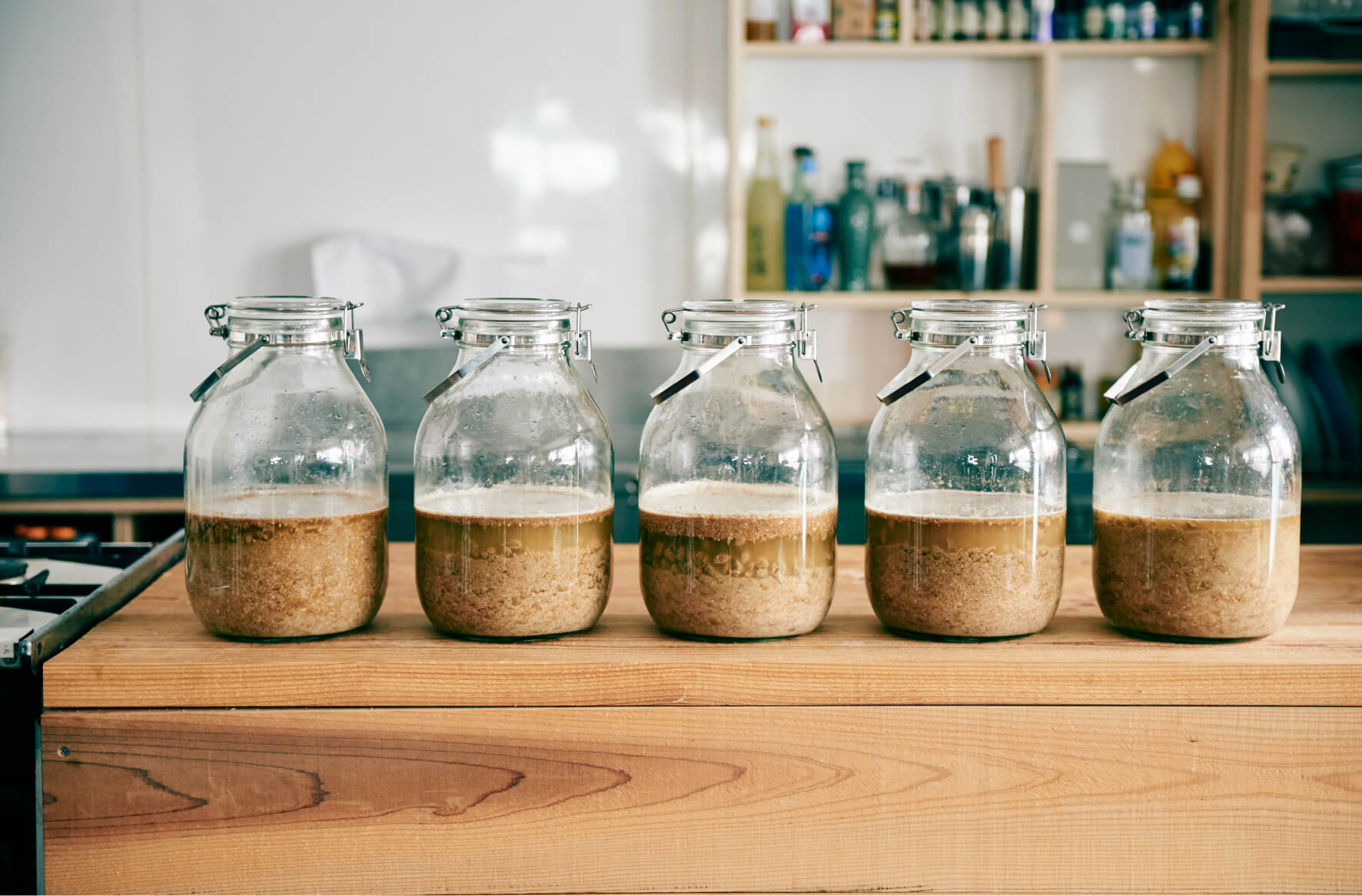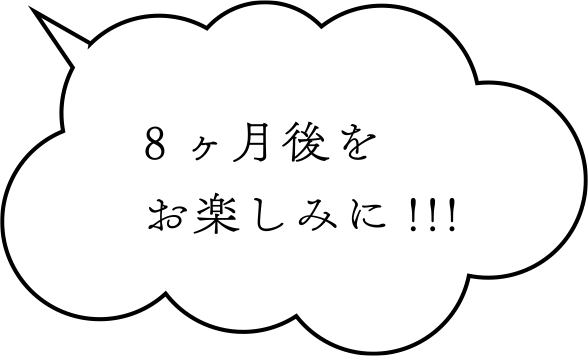

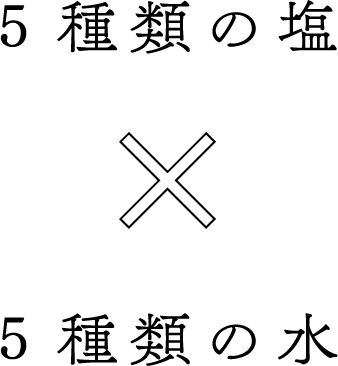
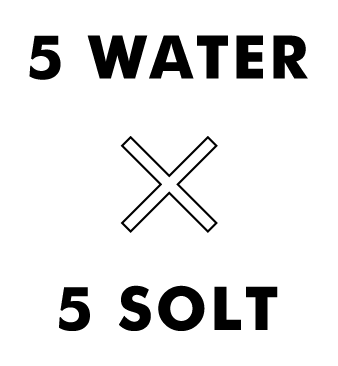
醤油作りのポイントは、「塩」と「水」と「種麹」でした。「種麹」は家庭で作るのは難しいですが、オリジナル醤油作りのポイントは「塩」と「水」にこだわることだとも言えます。そこで、実験です。世界各国の5種類の塩と5種類の水を用意し、5種類の醤油を仕込んでみました。おそらくいままで誰もやったことのない組み合わせを含む、8ヶ月にわたる実験です。
こだわりの最大ポイントは、塩。後述するように水に関しては未知の部分が多いからです。そこで、フランス、イタリア、ポルトガルなど、ふだんの料理に使ってもおいしい塩ばかりを用意。塩は、どこで採られるかによって海塩、岩塩、湖塩の3つの種類に大別され、さらに製法等で細分化されます。塩のなかには海藻から作った塩=藻塩、という個性的なものもあります。様々な塩を使って、今回の実験を試みました。
そして、水。軟水と硬水に大別されるのですが、今回はそのふたつ共を選んでみました。ちなみに料理の世界では、硬水はミネラルの含有量が多く、和風の出汁をとるのには向いていないと言われており、フォンドボーのような仔牛の骨などを扱う洋風の出汁のときは硬水がいいとされています。醤油の醸造を200年以上行っている八木澤商店さんですら硬水で醤油を作ったことがないとのことですから、どんな醤油ができるのか、とっても楽しみですね。撮影:衛藤キヨコ
The secret of the recipe includes salt, water, and Tane-Koji. Although Tane-Koji is challenging to cook by yourself, what matters more are salt and water in making an original soy sauce. Therefore, and recipe magazine began a new experiment. With five different worldwide salts and water, we have arranged five different soy sauces. Over the trial period of eight months, it may be the world's first experiment.
As water is still unknown to us, salt is the most significant factor. That's why we arranged delicious salts, made in France, Italy, Portugal and so on. Depending on its origin, salt is classified into three groups of sea, rock and lake salt. More specifically, for instance, seaweed salt is made from seaweed. Likewise, we implemented this experiment by using the long list of assorted salts.
Water is classified as the soft water and hard water. For this time, we selected both. For your information, hard water is not used for Japanese Dashi when we cook, as it's high in dissolved minerals. Rather than that, it is more suitable for Western Dashi, such as fondue. Even Yagisawa Market, with its 200-year history of soy sauce brewing, has never used hard water to make soy sauce. Thus, it makes us more excited about this new experiment.Photographs by Kiyoko Eto
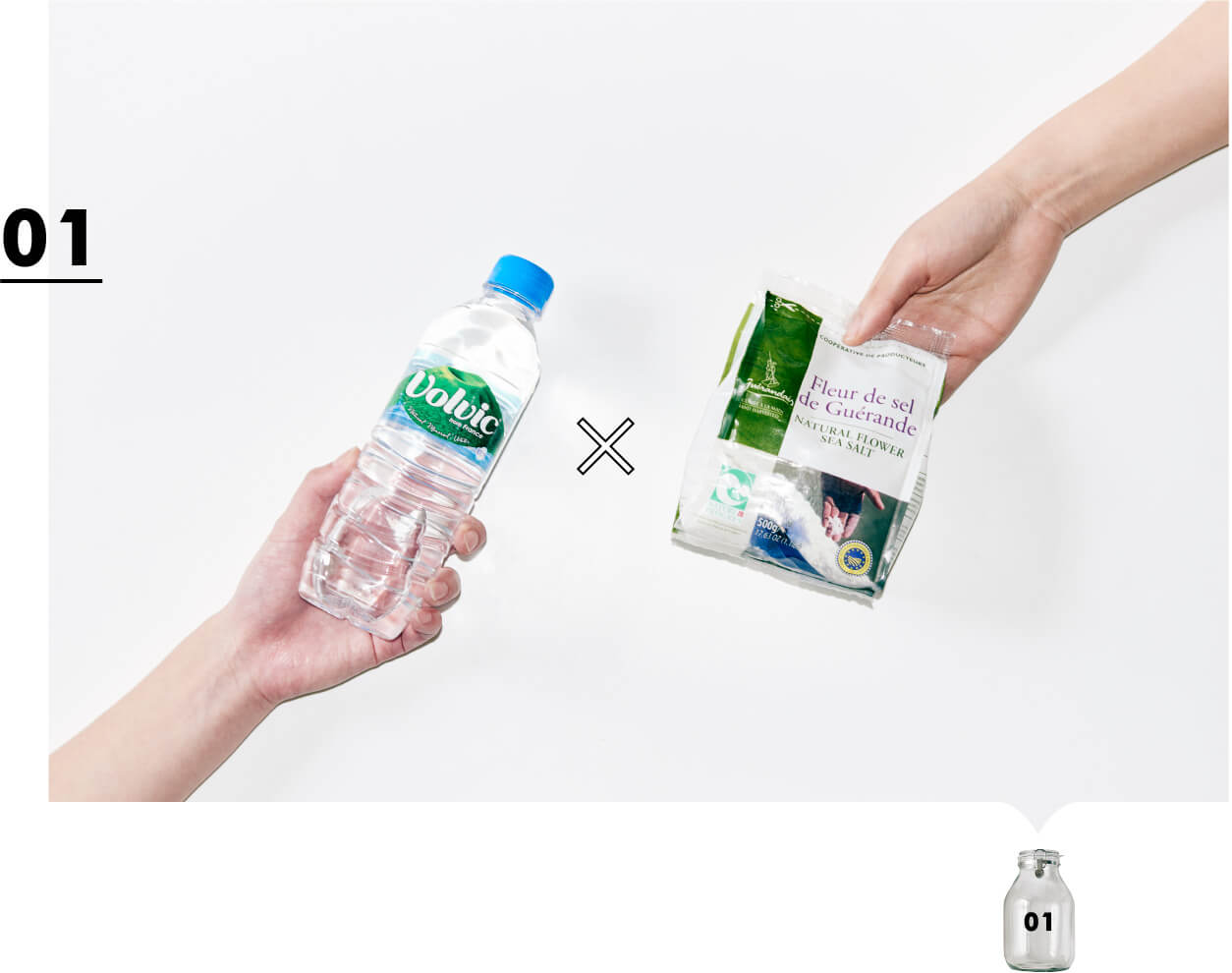

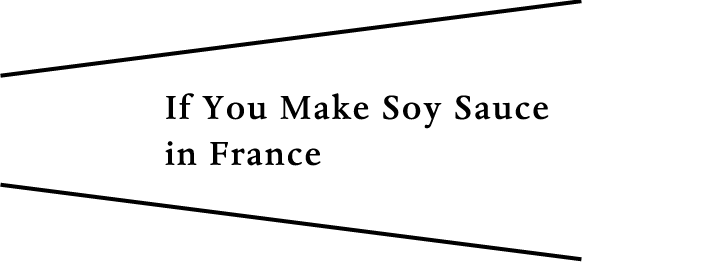
フランスのブルターニュ地方のゲランド塩田で伝統的な製法で作られた塩は、「ゲランドの塩」と呼ばれています。ミネラルを多く含み、まろやかな味わい。ボルヴィックは、フランスのボルヴィック村で採水されている軟水です。The Guérande Salt has been harvested according to centuries-old traditions in Guérande salt marsh zone in Brittany, France. It is rich in minerals, along with its soft and sweet taste. Volvic is soft water from Volvic village.
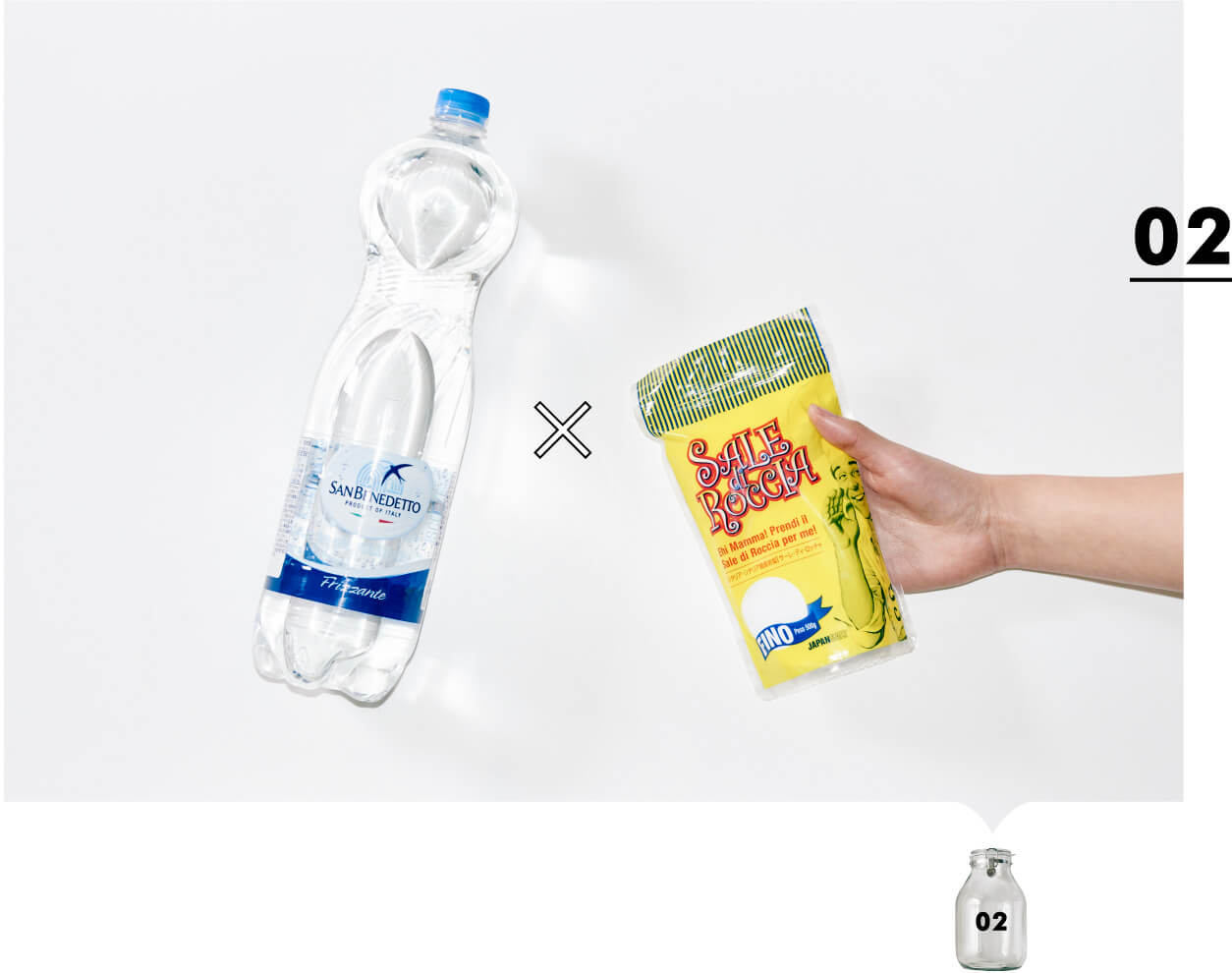
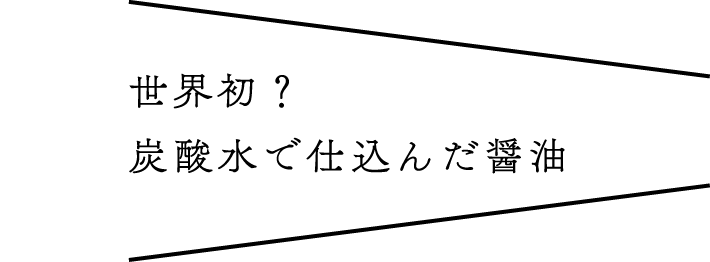
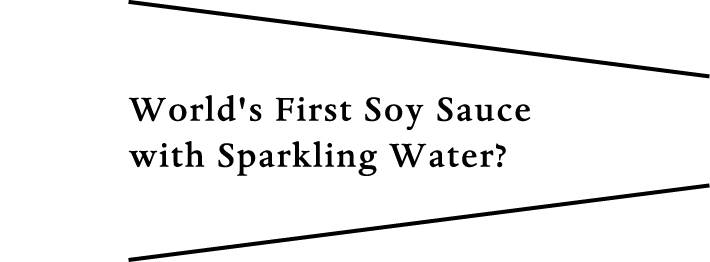
サーレ・デイ・ロッチャはイタリアのシチリア島で採掘された岩塩で、様々な料理に合います。それと組み合わせたのは、中硬水のサンベネデットというイタリア生まれの炭酸水。はたして、どんな醤油に仕上がるのか、もっとも想像できません。Sale di Roccia is the Italian rock salt, harvested in Sicily Island. The salt matches well with a variety of foods. To combine, we used a fairly hard water of San Benedetto, sparkling water in Italy. Soy sauce as we cannot even imagine.
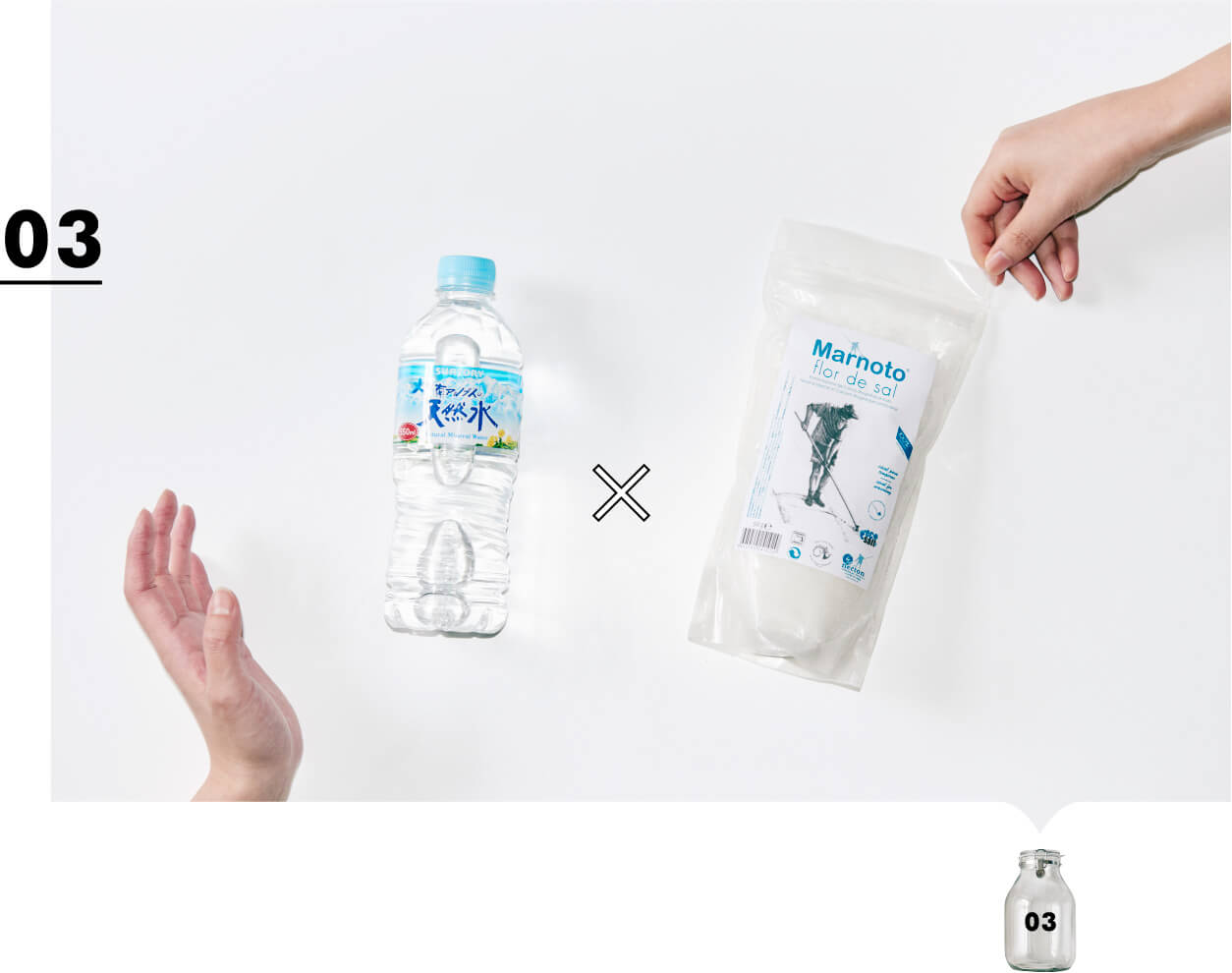


ポルトガル、ネクトン社のフロール・デ・サル(塩の華)は、マグネシウムやミネラルをたっぷり含んでおり、塩田で昔ながらの製法によって作られています。おなじみの南アルプスの天然水は、軟水であり、山梨県で採水されています。Fleur de Sal, a flower of salt, made by traditional way of harvesting in the salt marsh, is rich in magnesium and mineral. This familiar Natural Mineral Water Southern Alps is soft water from Yamanashi.
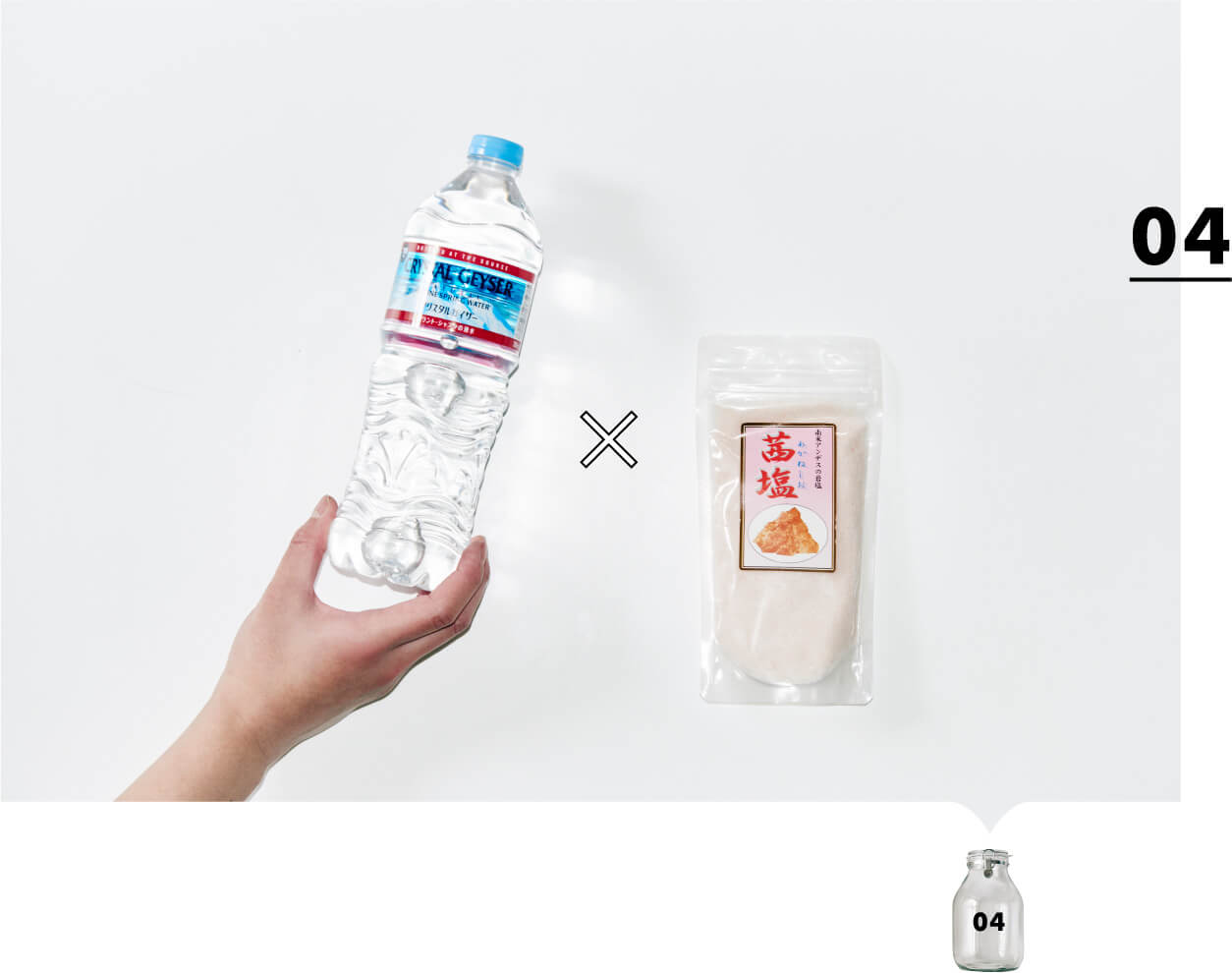

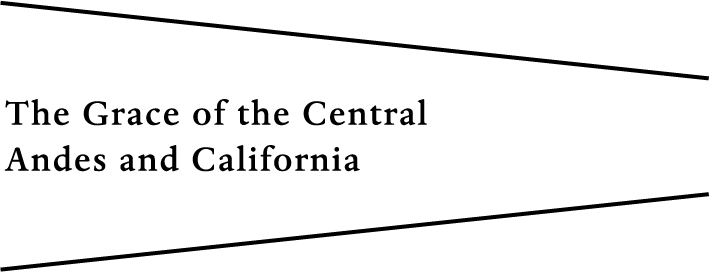
茜塩は、南米ボリビアのアンデスで採掘された岩塩です。カリウム、鉄分を多く含み、その名のとおりに淡いピンク色をしているのが最大の特色です。クリスタルカイザーは軟水で、カリフォルニア州で採水されています。Filled with rich potassium and iron, Akane Salt is a rock salt, harvested in Andes, Bolivia. Just like its name, it has an outstanding color of bright pink. Crystal Geyser is soft water from California.
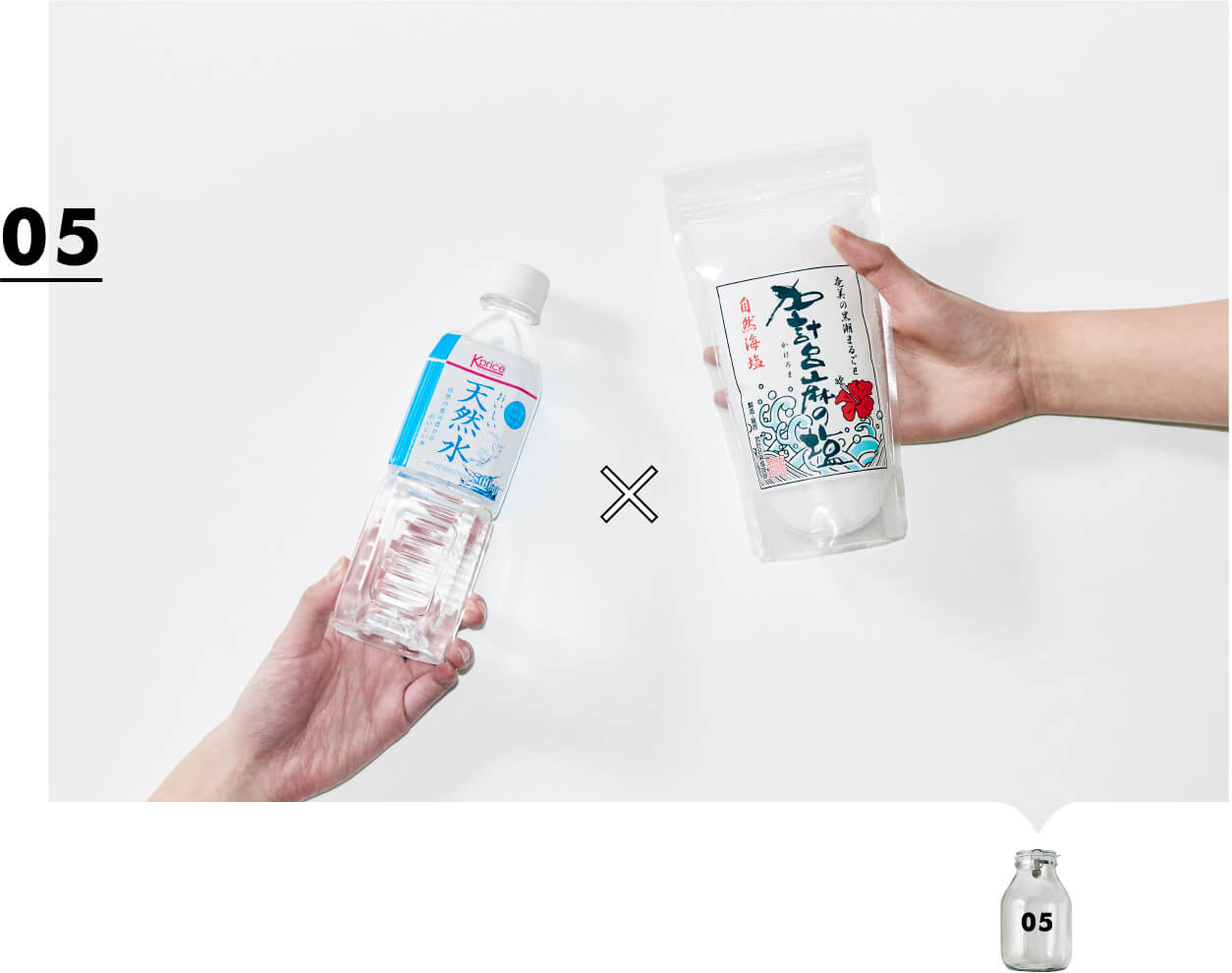
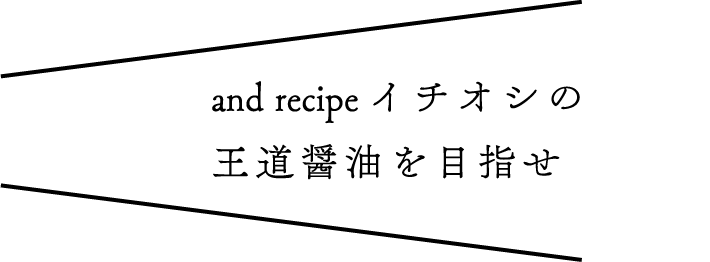

奄美諸島沖の海水をくみ上げ、釜で炊いてできたのが加計呂麻の塩。甘みが強く、やわらかな味わいが特徴で、and recipeのイチオシです。そんな塩と岐阜県で採水された軟水、おいしい天然水との組み合わせは、今回仕込んだ醤油のなかでもっともスタンダードです。Harvested from Amami's seawater, Kakeroma Salt is baked in a kiln. and recipe strongly recommends the Kakeroma Salt for its recognized sweet and soft taste. It would be the most common soy sauce in this experiment to combine the salt and Delicious Mineral Water, soft water from Gifu.
